Stairs and I are not friends. For someone who has an immense dislike for inclines, the 349-metre Sirigiya Rock in Sri Lanka presented itself as an Everest-level challenge. The thought of climbing almost 1,300 steps sounded less like an adventure and more like a cruel joke. But there it was; the imposing Sirigiya Rock loomed right before my very eyes.
Sigiriya deserves its reputation as the most famous wonder of Sri Lanka. Built in the 5th century AD by King Kashyapa, this UNESCO World Heritage ancient rock fortress was a blend of paranoia and ambition. Kashyapa, who seized the throne after murdering his father (not exactly Father of the Year material), feared revenge and decided to build a nearly impregnable palace atop this massive rock.
The fortress featured moats, gardens, and even a palace at the summit, complete with a throne, pools, and panoramic views. Unfortunately for Kashyapa, his fortress didn’t save him—he was defeated in battle and took his own life. But his legacy lived on, and Sigiriya became a monastery before being abandoned, rediscovered, and turned into a must-visit site for travellers.
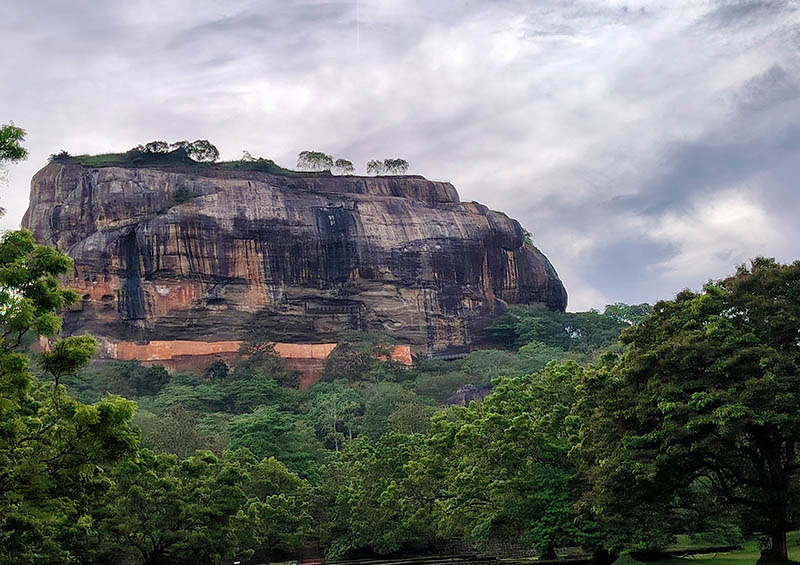
The imposing Sirigiya is a must-visit in Sri Lanka. Photo © Katherine Goh
The Climb Begins

The climb begins. Photo © Katherine Goh
The climb started off deceptively easy. The base of the rock is surrounded by lush gardens, tranquil ponds, and ancient ruins that almost distracted me from the task ahead. For the first 50 steps, it actually wasn’t so bad.

One has to conquer about 1,300 steps to get to the summit of Sirigiya. Photos © Katherine Goh
Then the stairs got steeper and longer, and reality and gravity hit like a ton of bricks. My legs and my lungs began to protest with a personal vendetta against me. Every so often, I’d pause to “admire the view” (code for catching my breath while pretending to be taking photos of the scenery). A group of senior citizen tourists also appeared to join the climb. If they could do it, so could I.
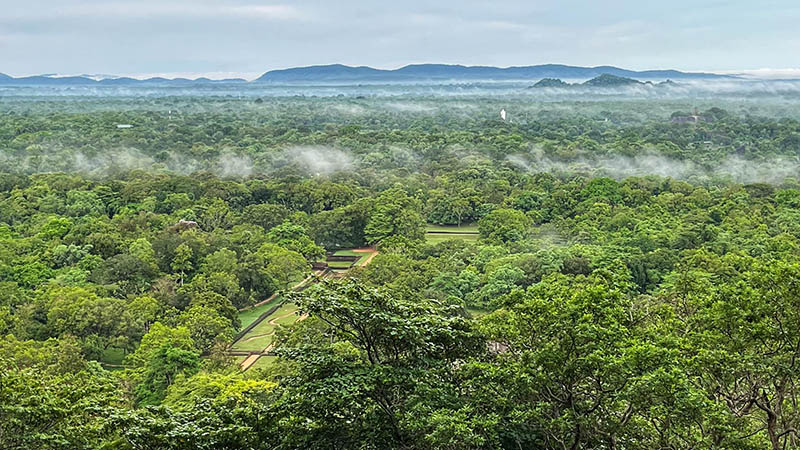
Take time to admire the views and catch your breath as you climb. Photo © Katherine Goh
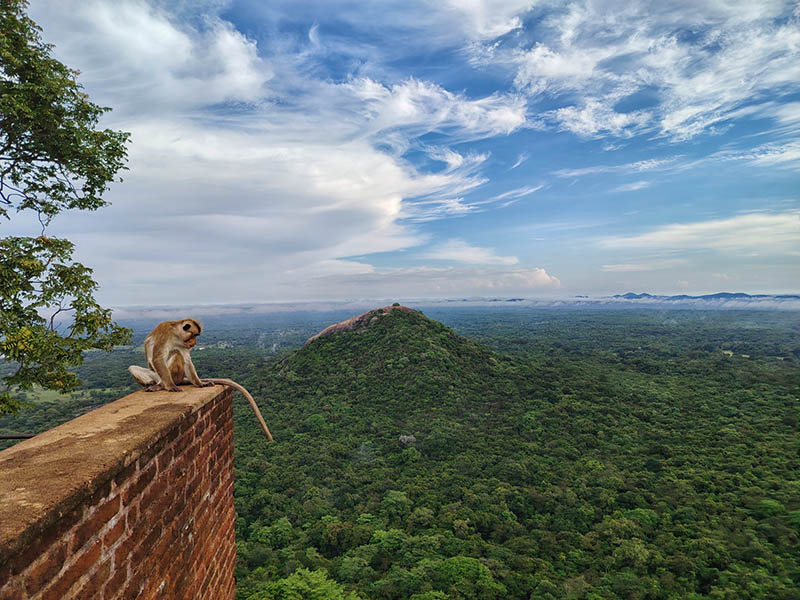
Photo © Katherine Goh
The turning point of the climb was the Lion’s Gate, an iconic structure with massive stone lion paws flanking the entrance. Back in Kashyapa’s time, there was an entire lion statue here, but all that remains are the paws. Still, the symbolism was clear: if I wanted to conquer this rock, I’d have to channel my inner lioness.
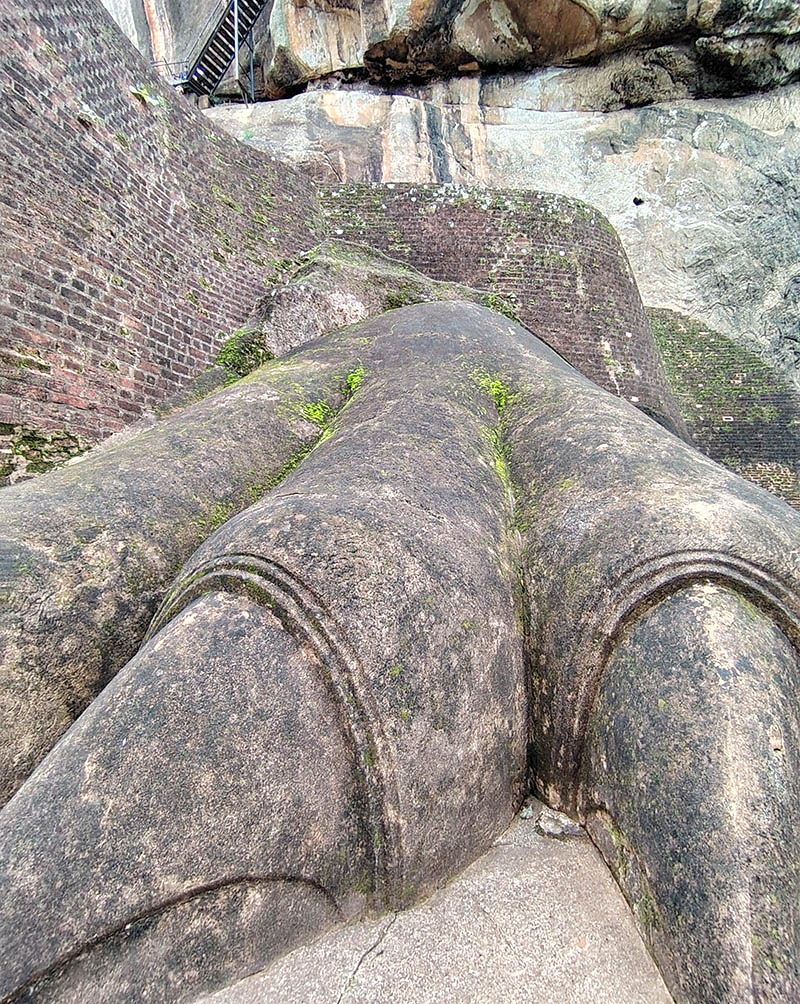
The Lion’s Gate is the halfway point for the climb. Photo © Katherine Goh
I had thought this was just the beginning. To my relief, our guide informed that we were already halfway to the top. It looked like it wasn’t so bad after all. Or, maybe I spoke too soon.
What followed was both the most thrilling and terrifying part of the climb: the final ascent. A series of narrow metal staircases clung precariously to the side of the rock. With the ground far, far below and a fear of heights, I gripped the railings like my life depended on it. I did not look out to the scenery. Instead I climbed sideways and faced the rock as I made my ascent.

An arduous climb awaits at Sirigiya. Photo © Katherine Goh
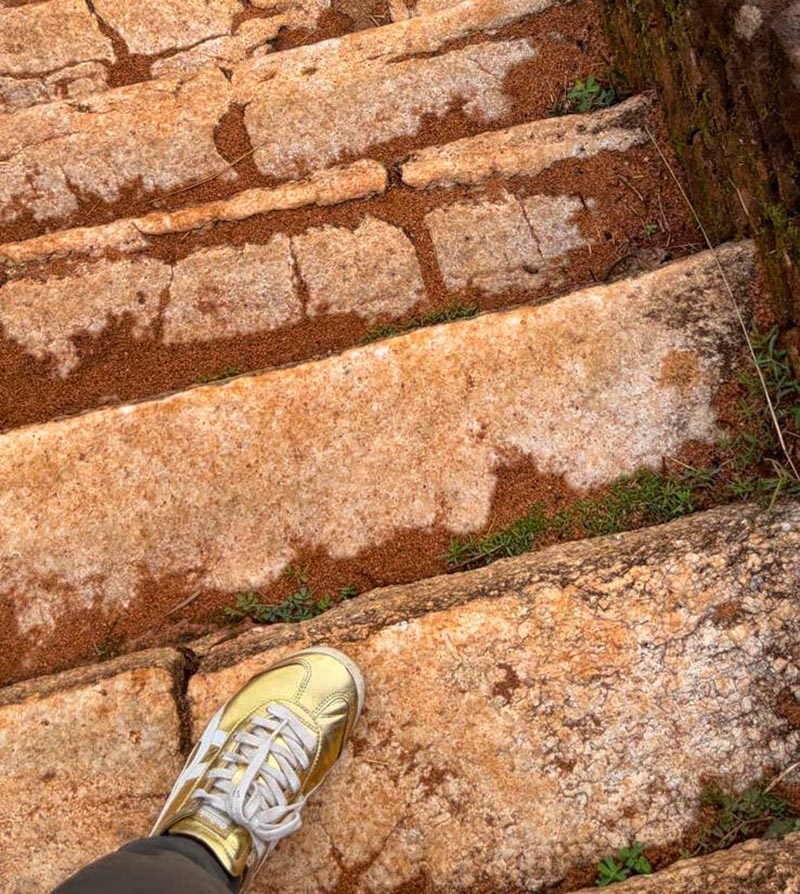
I have to grapple with small and slippery steps at some parts of Sirigiya. Photo © Katherine Goh
A stranger directed to my attention to a hanging wasp’s nest nearby. Oh, great.
After what felt like an eternity—and several motivational pep talks to myself—I finally reached the summit. Despite my exhaustion, there was a sense of pride bubbling up inside me. I had done it. I had climbed all 1,300 steps and lived to tell the tale.

Photo © Ling Doh Kin.
The view made every aching muscle and gasping breath worthwhile. From this height, the Sri Lankan countryside stretched out in all directions, an endless sea of green punctuated by the occasional mountain or lake.

Photos © Katherine Goh
The ruins of Kashyapa’s palace sprawled across the plateau, offering a glimpse into his royal lifestyle. There were the remnants of pools where the king likely bathed and a throne carved into the rock. I imagined Kashyapa sitting there, surveying his kingdom and probably feeling pretty pleased with himself. I couldn’t blame him—the view alone was worth the climb.
I did wonder though – how often did he make his way down the rock? If I were him, I’d probably stay put on the summit and never want to go down.

Photo © Katherine Goh
Survival Tips for Climbers
If you’re thinking of tackling Sigiriya (and you should), here are some words of wisdom from a reluctant climber:
1. Start early: The sun is not your friend after 10am.
2. Hydrate: Bring water, but sip slowly—no one wants to climb stairs with a sloshing stomach. And, there’s no toilet at Sirigiya Rock.
3. Wear proper shoes: This is not the time for cute sandals or flip-flops.
4. Travel light: leave your big backpack at the hotel and just come armed with a small bag with essentials.
5. Pace yourself: It’s not a competition. It’s ok to take lots of breaks along the way to catch your breath.
How to Get There
Jetstar flies from Singapore to Colombo, operating five return services each week using their fleet of Airbus A320s. The split schedule offers morning and evening departures from Singapore’s Changi Airport, providing a low-cost choice for those starting their journey in Singapore and easy connections for those travelling via Singapore on Jetstar Airways’ (JQ) daily service from Melbourne or the up to six weekly flights from Perth.

To book your flight, visit Jetstar’s website.




